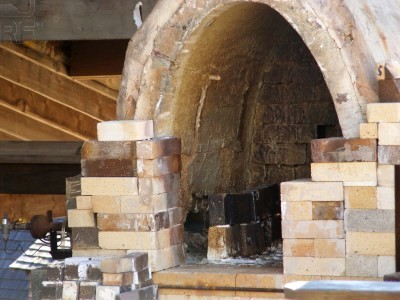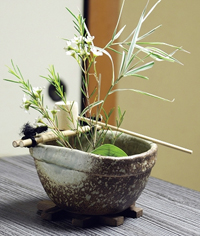Earthenware - Japanese Traditional Culture | Kiln
Kiln

Kilns come in many varieties, from wood-burning to electric, fuel oil, natural gas, coal, or propane.
The heating method greatly influences the pottery -- e.g., for natural ash glazes, potters prefer the wood-burning anagama (see adjacent photo),
for it produces fly ash, which settles on the pieces, melts, and creates a natural ash glaze that cannot be achieved with any other type of firing.
Learning all there is to know about kiln firing is a daunting task, for no two firings are ever exactly the same.
Even the great masters cannot control the kiln to perfection -- there are just too many variables --
how much air, how much wood, what fuels to use, when to use them, how to control temperatures, how much stoking, how to stack the pieces, where to place the pieces.
The potter controls about 85% of the process but other factors are beyond control, like weather, wood-condition,
and kiln atmosphere, which are left to the kama no kami or kiln god.
Copyright© Earthenware All Rights Reserved.
